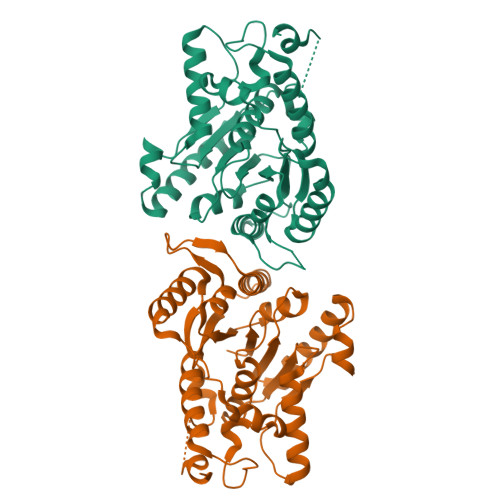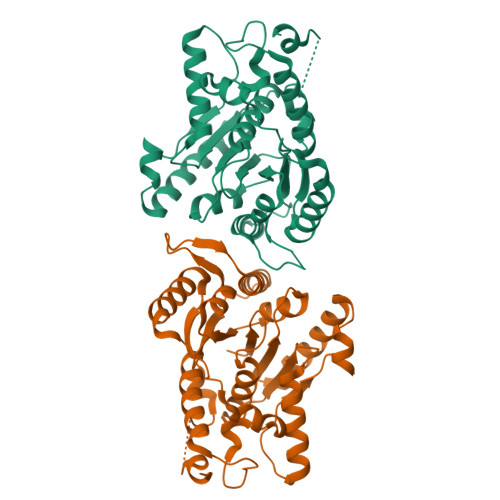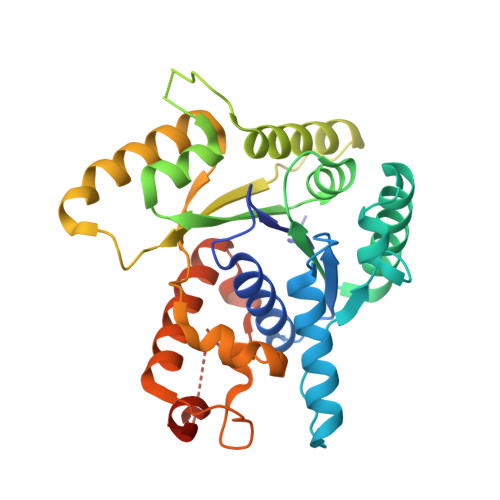Localized Dimerization and Nucleoid Binding Drive Gradient Formation by the Bacterial Cell Division Inhibitor Mipz.
Kiekebusch, D., Michie, K.A., Essen, L.O., Lowe, J., Thanbichler, M.(2012) Mol Cell 46: 245
- PubMed: 22483621
- DOI: https://doi.org/10.1016/j.molcel.2012.03.004
- Primary Citation of Related Structures:
2XIT, 2XJ4, 2XJ9 - PubMed Abstract:
Protein gradients play a central role in the spatial organization of cells, but the mechanisms of their formation are incompletely understood. This study analyzes the determinants responsible for establishing bipolar gradients of the ATPase MipZ, a key regulator of division site placement in Caulobacter crescentus. We have solved the crystal structure of MipZ in different nucleotide states, dissected its ATPase cycle, and investigated its interaction with FtsZ, ParB, and the nucleoid. Our results suggest that the polar ParB complexes locally stimulate the formation of ATP-bound MipZ dimers, which are then retained near the cell poles through association with chromosomal DNA. Due to their intrinsic ATPase activity, dimers eventually dissociate into freely diffusible monomers that undergo spontaneous nucleotide exchange and are recaptured by ParB. These findings clarify the molecular function of a conserved gradient-forming system and reveal mechanistic principles that might be commonly used to sustain protein gradients within cells.
Organizational Affiliation:
Max Planck Institute for Terrestrial Microbiology, 35043 Marburg, Germany.
















